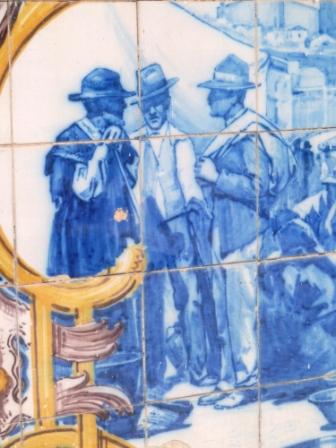After a marvellously creative and stimulating time at an OBRAS art residency in Evoramonte, Portugal, I have been remembering back to vignettes of great beauty.
One of the wonderful delights, of course, was seeing the diversity of the tiles or azulejos about which I have written previously. Since I was spending time in the fortress hill town of Estremoz, in the Alentejo region, I was charmed by some of the modern versions of tiles, adorning the facades of houses in the centre of town.
More historic tiles in Estremoz include amazing tile pictures all around the outside of the original train station, serving a railway line built for the Kings of Portugal to travel between their various palaces.The railway line is long disused and a tangle of brambles and flowers, but the railway station in Estremoz is protected, with the tiles covered by Plexiglas against vandalism or theft.
More delicious houses shouldered together around the main, vast Estremoz square, some of which told of their builders' dreams and aspirations.
Much earlier azulejos adorn the handsome stairs up the main building of the present municipal offices, once part of the “Congregados” convent and church that was started in 1698. I was fascinated by the hunting, fishing, boating and picnicking scenes, and thought the top “ladies” were fun.
Everywhere you go in Portuguese towns and cities, there are details of interest or delight that stop one in one’s tracks. The azulejos, modern and of previous centuries, never fail to add colour, harmony and life to buildings.

























